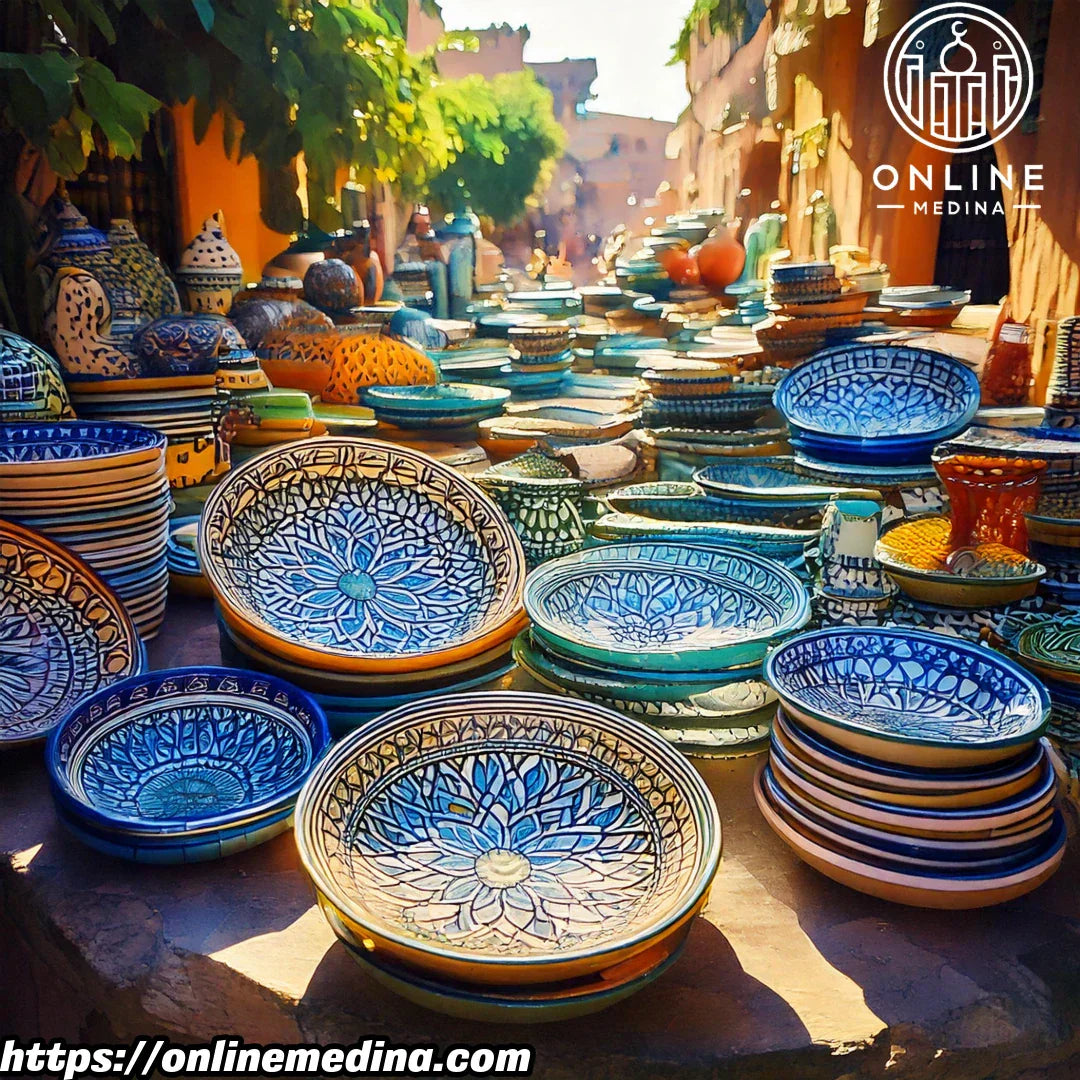
🎬 EPISODE 2: Safi and Fez pottery
EPISODE 2. For millennia, Moroccan potters have humbly transformed clay into true masterpieces. Between Safi, Fez, and Tamegroute, each city tells a story where the artisan's hand interacts with clay, fire, and time. From raw pottery to vibrantly colored glazed ceramics, let's dive together into a world where tradition and expertise blend to bring timeless objects to life.
📜 At the origins of Moroccan pottery and ceramics
The history of pottery in Morocco dates back over 6,000 years, when Berber peoples shaped clay to create jars, tagines, and other everyday utensils.
🏺 Influences of ancient civilizations
The art of ceramics has been enriched by the different cultures that have crossed Morocco:
- Phoenicians and Romans (1000 BC – 300 AD): introduction of throwing and early advanced firing techniques.
- Idrisid dynasty (8th – 9th century): structuring of the first production centers in Fez.
- Merinid and Saadian dynasties (13th – 16th century): peak of glazed and decorated ceramics under the influence of the Andalusians in exile.
📌 Moroccan ceramics are also the basis of the famous art of zellige, omnipresent in traditional architecture.

📜 The main regions of pottery and ceramics
Each region of Morocco has its own distinct style, shaped by its history and natural resources:
🏛️ Fez: the excellence of glazed ceramics
- Renowned since the 13th century for its bright white ceramic decorated with blue patterns.
- Andalusian heritage with the influence of potters exiled from Spain.
- Main feature: shiny enamel and geometric patterns inspired by Islamic art.
🏺 Safi: the capital of Moroccan ceramics
- Production center since the 15th century, exploiting local red clay.
- Specialty: brightly colored ceramics (green, yellow, brown), with floral and Berber motifs.
- Exported to Europe and the Middle East from the 19th century.
🌿 Tamegroute: green ceramics and its mystery
- Small village in southern Morocco, famous for its rustic pottery with a unique green color obtained by a natural glaze based on manganese and copper.
- Ancient firing techniques where pieces are placed directly into the ash, creating authentic irregularities.
📌 Just like rugs, ceramics reflect Moroccan regional identities through their colors and patterns.

📜 From clay to masterpiece: how ceramics are made
The production of pottery and ceramics follows a meticulous process passed down from generation to generation:
1- Extraction and preparation of clay
- Originating from the Atlas Mountains or coastal plains.
- Sifted and kneaded to remove impurities.
2- Shaping: two distinct traditions
- Traditional pottery: hand-molded or wheel-thrown, used to create sturdy everyday objects.
- Decorative ceramic: shaped with precision before being glazed and decorated.
3- Drying and firing
- First firing at 900–1200 °C in a wood or gas oven.
4- Enameling and decoration
- Applied based on silica and metal oxides, giving brilliant colors:
- Cobalt blue from Fez
- Deep green of Tamegroute
- Yellow and red ceramics from Safi
5- Second firing and finishing
- Fixing the enamel for a shiny and waterproof surface.
📌 Just like pottery, Moroccan leather undergoes meticulous processing to obtain exceptional finished products.

📜 Ceramics in daily life and home decoration
The art of ceramics is not limited to utilitarian objects. It plays a key role in Moroccan decoration and interior design.
- Tagines and traditional dishes: essential in Moroccan cuisine.
- Zelliges and wall coverings: integrated into palaces and hammams.
- Decorative objects and lighting: lamps, vases and mirrors merging old and modern.
💡 Current trends:
- Adaptation of traditional patterns to contemporary designs.
- Collaborations with international designers.
- Promotion of craftsmanship through e-commerce and export.
📌 Ceramics play a central role in the design of Moroccan riads and spaces.

📜 The future of Safi and Fez pottery
- Safi: leading production center, with more than 2,000 artisans.
- Fez: world reference in Islamic ceramics.
- Export to Europe, USA and Middle East.
💡 Challenges and developments:
- Modernization of production methods.
- Protection of artisans in the face of globalization.
- Teaching and transmission to new generations.
🛒 Online Medina and the art of Moroccan ceramics
At Online Medina, we pay tribute to the master potters of Fez, Safi and Tamegroute by soon offering an exclusive selection of artisanal ceramics. Each piece, shaped and painted by hand, testifies to ancestral Moroccan know-how.
✨ Discover our collection soon and bring an authentic Moroccan touch to your interior!

🌟 An art that spans the centuries
Moroccan pottery and ceramics are more than just everyday objects. They are a testament to the past, the fruit of a millennia-old heritage, and a symbol of creativity. Buying Moroccan ceramics means owning a piece of history crafted with passion and precision.
📌 In the next episode: discover the world of Berber rugs, where each pattern is a strong symbol of Amazigh culture!
🖌️ Inspired by clay and fire? Discover Online Medina and find more soulful handmade pieces.